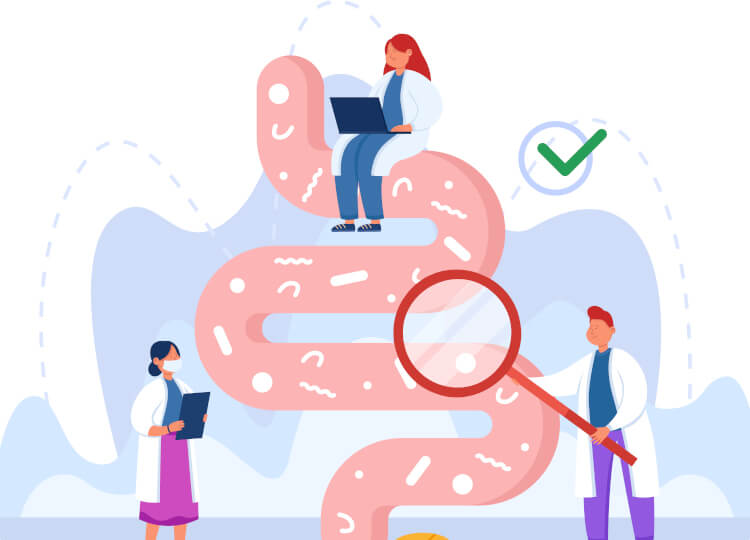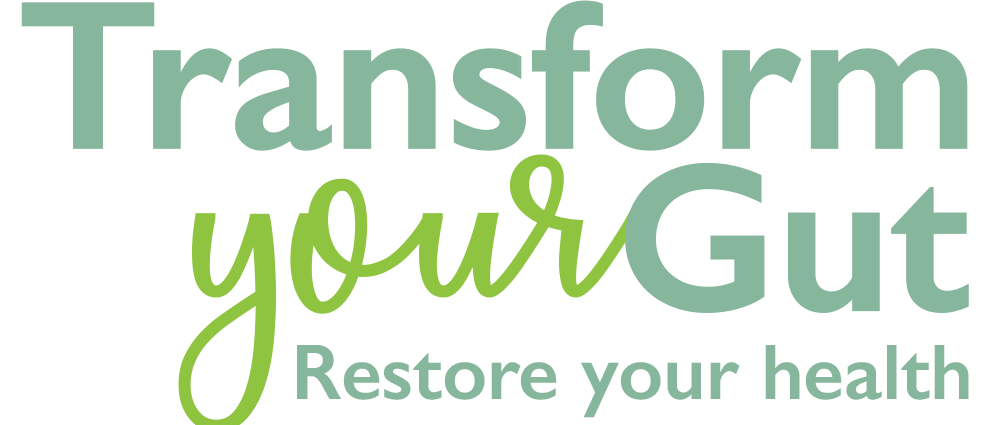
What is SIBO?
SIBO is the overgrowth of commensal bacteria in the small intestine. That’s normal bacteria that just gets out of control, as well as archaea and yeast. The archaea are what produce methane gas, and bacteria make the hydrogen gas. It’s estimated that 85% of IBS cases are due to SIBO. So we’ll use these terms interchangeable throughout as they’re pretty much the same thing.
When we have a slowing of the MMC, the migrating motor complex, these bacteria tend to build up. The MMC is what performs a clean sweep, if you will, of the small intestine, moving everything in a peristaltic wave towards the end of the small intestine, ready to be transferred to the large intestine. It does this every 90 minutes in a healthy gut. However, it only does this during periods of fasting. So the minute we eat something, it stops. This is the reason why fasting or at least not snacking in between meals can be so helpful for people with gut-related problems.
What Causes SIBO?
There are several reasons why you may have SIBO.
- Viral or bacterial gastroenteritis has been found to be a significant link in post-infectious IBS.
- Ileocecal valve issues can also be a problem. If there is a problem, you can get cecoileal reflux. Basically, this means there’s a back-flow of colonic bacteria into the small intestine from the colon. You can have billions, even trillions, of bacteria in the small intestine which will cause symptoms we’ll discuss later.
- A damaged mucosal wall will lead to intestinal hyperpermeability, which results in food sensitivities and can cause autoimmune diseases if not rectified.
- Hypochlorhydria, low stomach acid and enzyme deficiencies mean we’re not completely breaking down the food we eat, therefore providing a food source for the bacteria to feed on.
- Stress, resulting in dysbiosis, an imbalance in the bacteria in the gut, can lead to intestinal hyperpermeability and reduced MMC, Migrating Motor Complex.
- The overuse of antibiotics. I see this a lot with my clients who have taken long courses to treat acne and ended up with chronic IBS symptoms as a result.
- PPIs (Proton Pump Inhibitors) lower HCI, stomach acid, and therefore increase small intestinal flora.
- Opiates and other pain killers take the MMC to a virtual standstill, allowing bacteria to overgrow.
Any altered bowel flora can lead to mucosal inflammation and immune dysfunction leading to IBS and SIBO. Ruling out parasitic infections is important as these can mimic SIBO.
Telltale Signs you may have SIBO
Bloating and gas, often accompanied by belching and flatulence, intense cramping, constipation and/or diarrhoea, heartburn, reflux (especially if there is methane gas), and nausea are all common symptoms of SIBO.
Headaches, joint pain, skin rashes, brain fog, cognitive issues, anxiety and depression. Malabsorption which leads to anaemias and fat-soluble vitamin deficiencies, and subsequent weight loss are all due to gut hyperpermeability or leaky gut. This results in the release of LPS, Lipopolysaccharide, a toxic bacterial component that escapes through the damaged gut wall, leading to many often debilitating symptoms.
Lactulose breath Testing
I recommend the lactulose breath test. In terms of breath tests, it’s either lactulose or glucose. I opt for lactulose because glucose gets absorbed in the body quickly, so we only really get to know if SIBO is present in the first few feet of the colon. Considering the length of the small intestine is anywhere from 18 to 22 feet, that’s a lot of missed intestine. As lactulose is a synthetic indigestible sugar and cannot be digested by humans. It’s the bacteria that reside in the intestine that break it down and ferment it into gas. Using the lactulose breath test we get to see how much gas is produced throughout the entirety of the small intestine. Some tests last for 1 or 2 hours. I like to use the 3-hour test as it shows what happens as the lactulose enters the colon.
Before taking the test, there is a 2-day preparation. You can only eat protein, followed by a 14 hour fast which is easily done if planned properly. Get an early night, have a lie-in, and you’re almost at 14 hours. On the day of the test, drink the lactulose solution to get a baseline reading. Then follow up with breath tests at 20-minute intervals until you’ve finished the test.
Treatment for SIBO
We treat SIBO with a mixture of antimicrobials or antibiotics. This is dependent on whether the issue is methane or hydrogen gas. The levels recovered will determine how many rounds of treatment are needed.
Once SIBO has been eradicated, prokinetic therapy needs to be followed for 3 months. There are a number of products on the market as well as low dose prescribed antibiotics. The naturals are Motilpro and Iberogast, both are great. Choose Iberogast when there’s constipation. Iberogast is a serotonin receptor antagonist helping with constipation and also the MMC, Migrating Motor Complex. However, I do need to caveat this, as it may not be strong enough.
Antibiotics Erythromycin or Prucalopride, on the other hand should work. They can be used at a low dose, so they don’t exert an antibiotic effect. Prucalopride is the safest of the two and comes under the brand name Resolor. It’s a 5HT4 agonist and works incredibly well as a prokinetic where there’s long-term constipation, as it helps to move both the small and large intestines. If you’d like to try this you will need to discuss this with your GP.
Effective Diets and Fodmap
FODMAP is an acronym for fermentable oligosaccharides, disaccharides, monosaccharides and polyols. These are short-chain carbohydrates and sugar alcohols poorly absorbed in the small intestine, resulting in abdominal pain and bloating. A low FODMAP diet works by swapping foods that are high in fermentable carbohydrates with low FODMAP alternatives. There are several apps to help you navigate your way around the low FODMAP diet. Monash University fodmap diet is the most up to date.
The FODMAP A to Z is a free alternative. A low FODMAP diet should only be followed until SIBO has been eradicated. There are so many good foods that support health that aren’t allowed on the low FODMAP diet. Therefore we want to get rid of SIBO fast, so you can start to eat these healthy foods again.
Another alternative approach is the elemental diet. This consists of nutritionally complete formulas in a pre-digested state. These formulas contain proteins, fats, and carbs that have already been broken down into their building blocks, amino acids, fatty acids, and sugars. They also contain vitamins and minerals. However they are not pleasant and can be extremely challenging to stick to.
FIBRE
A word on fibre. We all know that fibre is good for the bowel, right. It protects against cancer, helps with transit time and alleviates constipation. Whilst all of this is true for the normal healthy bowel, a person plagued with SIBO will worsen on a high fibre diet. This is because fibre, especially soluble fibre, is great food for bacteria. In the colon, they make short-chain fatty acids from fibre which is extremely beneficial. However, in the small intestine, it just causes more gas, and because of the gas build-up, we get all these other symptoms. If fibre causes you an issue, follow a low fibre diet until you’ve worked through the programme. Peeling skins off fruits and vegetables, as well as cooking them, helps to reduce the amount of fibre they contain. Rather than swapping wholegrains for their white alternatives, it’s best just to avoid them and eat more vegetables. White carbohydrates have no nutritional value and turn straight to sugar upon digestion. Once you’re in a good place you can slowly reintroduce fibre.
If you are looking for a great place to help you with this kind of health issue, try to visit the Inner Health Clinic – Transform Your Gut in Stockport Manchester, the clinic offers a SIBO treatment. You can set an appointment here or call 07712 620909
